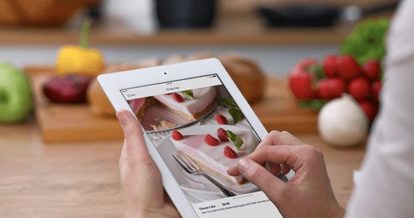So you’ve just traded in your legacy POS system for a shiny new model. Hooray! Welcome to the 21st century and more cash in your pocket.
But now you have to set up your own menu, and the process seems more daunting than you had originally thought. Your previous POS provider used to take care of that for you. So why should you be excited about this added step? Well…
1. You’ll walk away from set up knowing more about your menu than you ever have.
2. You’ll have analyzed your menu with another restaurant expert who can give you valuable feedback.
3. You’ll be taking full control of the success of your business by understanding how your menu influences your costs and profits.
But to gain all of these insights, there are some things you should and – shouldn’t do when you’re setting up your menu on your POS. Here are the do’s and don’ts of menu setup.
DO…
1. Get into the Nitty-Gritty
Every restaurant is different, and the complexity of your menu setup has everything to do with the details of your vision. When you walk through your menu setup, leave no stone unturned: list every modifier and walk through every ordering scenario a customer could possibly throw at you.
Take a burger, for example. Are you the type of joint that lets your customers build their own burgers from a massive list of toppings, or are your modificatitifons limited to “no tomato and extra mayo”? Regardless of your “modifier mantra,” think through both scenarios and replicate the ordering process on your POS menu. If you’re a pizza place that deals with half-pizza or quarter-pizza topping modifications, you’ll need to list those modifications individually in your POS as well.
2. Tie Your Menu to Your Reporting
To the customer, your menu is a playground of delicious possibilities. To you, your new POS menu is a way to get as much data as possible about how your business is performing.
That’s right – your menu is now a reporting tool. Think about it: if you have 10 beers on tap and two of them are ones you’ve never served your customers before, you’re going to want to know how they’ve been selling. If they’re a success, awesome! Switch out some other taps for beer that’s perhaps similar or complementary. If they’re not selling, you know you need to tweak your selection.
When setting up your menu, your POS provider should be asking what success looks like for your restaurant. If you consciously think about the information your menu should arm you with as a business owner, setting up your own menu – and knowing how to modify it down the road to increase profits will prove to be add a ton of value to your business.
3. Put Yourself in Your Staff’s Shoes
During menu setup, you’ll always want to keep in mind that your staff will be interacting with your POS the most. Think about your menu navigation: can your staff easily and quickly find what they need in your menu? Are your modifications clearly listed in a way that’s intuitive?
When your staff are successful, you’re successful. That’s why you’ll want to make it easier for them to deliver the best customer experience possible. Wherever possible, add rich menu descriptions and pictures, along with any allergy or ingredient information that could be useful to patrons. This ensures your staff can always answer any question about your menu and make recommendations to improve the dining experience. Plus it cuts down on training time, so you can get new staff on the floor, faster.
Servers are usually juggling a lot at once, meaning they may not always remember where to recommend sides, add ons, or priced modifiers to dishes – so prompting them to upsell whenever possible can have a big impact on your bottom line. Hamburger with fries – would you like to upgrade your side to a Caesar or Greek salad? Glass of merlot – five ounce or nine ounce?
DON’T…
1. Set Up Your Menu Alone
Your POS provider should be walking you through every aspect of your menu setup. They should be a knowledgeable source of information about not only your POS, but the needs of restaurateurs. They will ask you questions you never thought to ask about your menu: how often you switch up your dishes, your daily specials, your bestsellers, scheduled promotions (like happy hour), coursing (how do you envision people ordering?), etc. Think of your POS provider as a creative sounding board who is there to help ensure your menu is working for you, not against you.
2. Stop Tweaking After Set Up
If you’ve set up your menu properly, it’s working to give you a constant flow of information about your business. Now that your menu also operates as a reporting tool, you should be taking full advantage it –squeezing as much insight out of it as you possibly can. If you see, for example, that your blue cheese burger add-on isn’t selling as well as it should be, you may want to switch it up for some brie.
Just because you’ve completed your initial menu setup doesn’t mean you’re stuck with what you’ve chosen – make the most of the framework you’ve created and feel free to tweak as much as is necessary for the health of your business.
3. Be Intimidated
So you’ve never had to set up you own menu in the past, and doing it for the first time has proved to be a tough pill to swallow. But know self-setup doesn’t have to be painful – once you surpass the fear of the unknown, you will likely see how much you can learn about your business as a whole through self-setup. Reach out to your POS provider and share your concerns. They are equipped with the knowledge you need to make the process as seamless as possible.
Menu setup is a vital part of embracing a new POS system like TouchBistro or Focus POS and ensuring the success of your business. With the multi-purpose role that menu setup can play in your restaurant’s operations, you’ll likely find that you’ve gained more than you’ve given in the process – and boy, will it have been worth it!
Download our free inventory template
Sign up for our free weekly TouchBistro Newsletter







